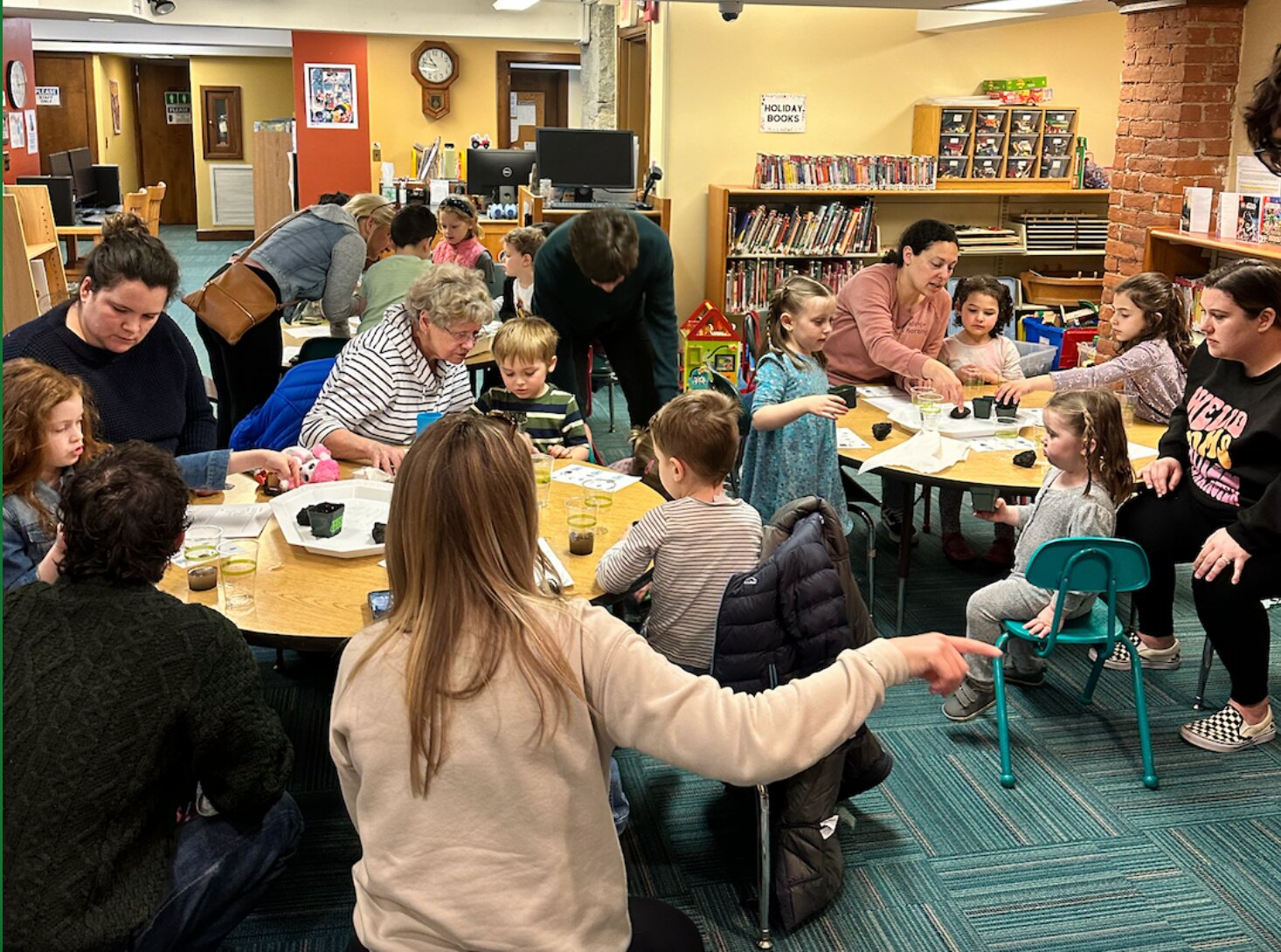Brown University students bring science lesson to preschoolers in Warren
The lesson was titled “Where Does Water Go?”, and focused on hands-on activities that welcomed kids ages three to five to understand what materials absorb water.
This item is available in full to subscribers.
Please log in to continue |
Register to post eventsIf you'd like to post an event to our calendar, you can create a free account by clicking here. Note that free accounts do not have access to our subscriber-only content. |
Day pass subscribers
Are you a day pass subscriber who needs to log in? Click here to continue.
Brown University students bring science lesson to preschoolers in Warren
A young girl gasped as the cup of water she poured into the nursery pot transformed in color. Across the room, eyes began to widen in amazement to what was happening in front of them.
“Why is the water yellow?”
“The water is dirty, mom!”
“This asphalt is as hard as a rock!”
This excitement was part of an educational event hosted on April 19 at the George Hail library. The lesson was titled “Where Does Water Go?”, and focused on hands-on activities that welcomed kids ages three to five to understand what materials absorb water.
The lesson was developed by three Brown University students with the help of Youth Services Librarian Michaela Hutchinson. The Brown students are supporting a Warren Health Equity Zone initiative to build climate and community resilience, especially as it relates to flooding.
Eleven curious preschoolers began the lesson with a nursery pot with a clear cup below. Each child would pour a cup of water into the nursery pot and observe what would happen.
First, they tested if chunks of asphalt would absorb water. Then, they repeated the same steps except they replaced the asphalt chunk with potting soil. Finally, they replaced the potting soil with soil with a plant inside of it.
The children ran around excitedly, getting up from their chairs to refill their plastic cups with water, dig their nursery pot into a bucket of soil, and carefully bring small chocolate mint plants back to their seats.
One of the highlights from the lesson was when the children sat together in the front of the classroom to share what they had observed in the activity. Some shared hypotheses with their peers, like “maybe the soil turned the water into mud,” while others shared newfound knowledge: “the asphalt is like rock, and rocks don’t absorb water”.
The Brown University students asked questions that would push them to think about how this activity could relate to larger issues, such as rainfall, flood prevention, and city infrastructure.
“If it was going to rain a lot tomorrow, what materials would you want in your backyard to soak up the rain?” they asked. After some peer brainstorming, many children eagerly raised their hands to answer.
“The plant!” one kid exclaimed.
“I would not want the rock,” another chimed in. Some smiled and nodded in agreement.
The goal for the lesson was to provide kids in Warren with deeper insight into how water impacts their daily environment. Through critical thinking and observation, the lesson created a space for kids to ask questions and voice their thoughts on how water behaves during heavy rainfall simulations.
“Breaking climate concepts down to a preschool level was challenging, but helpful in my own reflections on what we were teaching and why it was important,” William Malloy, one of the student instructors, reflected after the lesson ended.
By asking “what do you know about flooding?”, the student instructors hoped kids who may not have heard of the concept before would be exposed to it through their peers. For other kids who may have understood what flooding is, they hoped that talking about it would potentially allow them to connect the concept to their own lives and further their curiosity.
The grownups in the room expressed their gratitude for the Brown students in teaching the lesson after, mentioning that they were excited that their kids were able to learn about flooding in a digestible manner. Adults left with their joyful kids, each holding their own plant to take home.
“I really enjoyed doing hands-on work with the kids and hearing about their relationships with plants and asphalt,” said Aaron Epstein, another student instructor. “It was great to see the kids doing the experiments with their grownups.”
In the coming fall, Brown University students may develop additional climate-related workshops to educate kids and their guardians in continual partnership with the library and the Warren HEZ Climate, Safety, and Resilience Working Group.
To learn more about flooding in Warren, the Warren HEZ Climate, Safety, and Resilience Working Group meets on the fourth Tuesday of every month at the Mary V. Quirk Center.
Elizabeth Ding is a student at Brown University studying Cell and Molecular Biology. She is a student of Professor Kate Schapira’s “Writing Climate, Writing Community” class, which strives to share stories from the Warren community. She is part of the team of student instructors that developed and taught the science lesson.






